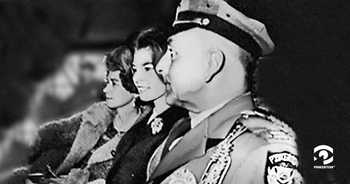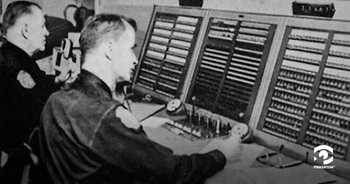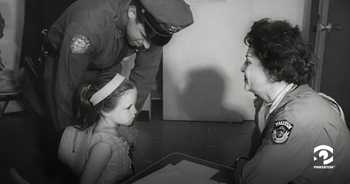In what would be hailed as the largest private security assignment in history, some 3,000 Pinkertons were officially deployed to the 1964/65 World’s Fair on April 22, 1964, at Flushing Meadows Corona Park in Queens, NY, USA. Approximately half of the Pinkertons were assigned to protect the billion-dollar exhibits while the other half staffed essential services including the World’s Fair Fire Department and the Pinkerton Police Department (PPD), both of which were largely crewed by former and off-duty first responders. Those in the PPD were sworn in as New York State Special Policemen and given authority under special state legislation to arrest anyone who broke the law within the fairgrounds.

In true Pinkerton fashion, a contingency of ever-vigilant detectives secured the fairgrounds against burglars, pickpockets, rioters, and vandals. Another contingency, World’s Fair Special Events Squad, provided executive protection for VIPs.
Even more Pinkertons worked as either ticket sellers or as matrons, one of the busiest groups at the Fair whose job was to care for and protect lost children until their parents were located.
Every member of the security team dressed in department-specific uniforms adorned with the iconic Pinkerton Security badges.
By the time the gates closed in October 1965, more than 51 million people attended the expo, long since remembered as a beacon of optimism and ingenuity in mid-twentieth-century America.
World’s Fair Police Department 1964-65
The World's Fair Police Department was the backbone of security for the 1964/65 World's Fair. Organizing the department was a herculean task that began two years before opening day in April 1964 and included a police headquarters and two precinct stations at other locations duplicating these services on a smaller scale.
Modeled after the New York City Police Academy, the World's Fair Police Academy opened in late 1963 to train officers for their service at the expo. Former and active members of the NYPD as well as other experienced law enforcement officers were recruited and required to meet specific qualifications, such as physical fitness, temperament, excellent employment rating and recommendations, and a clear criminal record.
Recruits underwent at least 40 hours of training for any situation that might arise, ranging from first aid, lost children, theft, disorderly conduct, assault, crowd control, ejection procedures, the use of force, and more.
“While our police are here to prevent crime, we must be able to handle any type of crime or disorder in the book,” stated World’s Fair Police Chief Joseph D’Azevedo, a veteran with more than 34 years with the New York City Police Department. "Friendliness and courtesy were our guiding principles, backed up by prompt action to prevent the small incident from quickly becoming big trouble."
During the 368-day expo, the police force had more than 1,000 uniformed police officers and 30 detectives patrolling the grounds. In addition to providing security, the Pinkertons also played a crucial role in investigating thefts and other crimes, providing first aid to injured fairgoers, and protecting VIPs.
World’s Fair Police Department Fast Facts
- 60 walkie talkies
- 150 vest receivers
- 1,000 uniformed officers, including 24 uniformed policewomen
- 106 Special Events officers
- 30 Pinkerton detectives
- 8 patrol cars on the fairgrounds
- 33 World's Fair Cushman Scooters – 15 dedicated to picking up and dropping off patrol officers in the outlying sections of Flushing Meadow
- Peak crowds of half a million visitors a day – 35,000 visitors an hour at the main gate
- 16-bed hospital staffed by a doctor and two nurses during fair hours
- 5 two-bed fully equipped first aid stations, each staffed by a nurse
Special Events Squad
The Special Events Squad, comprised of 106 officers selected for their bearing, demeanor, and maturity, underwent a rigorous 120-hour training program, triple the training provided to patrol officers. The squad also included officers proficient in a variety of languages.
This elite team was responsible for conducting ceremonial functions at the Fair and providing VIP escort for visiting dignitaries, including royalty, heads of state, governors, and other high-ranking officials from around the globe. Notable exceptions were US President Lyndon B. Johnson and a few other heads of state who were protected by the New York City police, the Secret Service, and the State Department. Even then, they were accompanied by a member of the Special Events Squad.
According to Fair President Robert Moses, “The Pinkertons were a multi-talented group of professionals who took their responsibilities seriously, and their dedication to their duties was impressive. We couldn't have done it without them.”
Advanced Security Communications
The WFPD was supported by an unequaled communications system. Handled by the World’s Fair Fire Department, another division of the Pinkerton’s World Fair Division, its principal feature was an innovative and sophisticated Nixie tube communications panel housed in the Pinkerton Security Building on the fairgrounds.

Operated 24 hours a day by veteran dispatchers of the New York Fire Department, the communications panel linked the 165 reporting telephones at various locations about the Fair to police, fire, and medical services. The communications panel received coded numerical messages sent by patrol officers showing the exact location and nature of emergencies as well as the precise equipment and personnel needed.
Dispatchers also had a direct link from the security department to police and fire headquarters in Queens, the NY borough where the Fair was held.
The communications system boasted another innovative feature — it automatically recorded every transmission, including those from the emergency reporting system, the two-way radio system, or the personal paging system. These recordings were stored on a permanent disc and could be played back at any time.
World’s Fair Fire Department
As part of the World’s Fair security, the Pinkerton National Detective Agency established the World’s Fair Fire Department. The 100-person brigade was largely comprised of retired and off-duty firefighters and was commanded by former FDNY Assistant Chief Thomas P. O'Brien and retired FDNY Battalion Chief James E. Gowdy, both of whom helped to write the department’s manual, an abbreviated version of the FDNY manual.
Just as the Fair itself exemplified innovation and technology, the WFFD was equipped with one rescue truck and three customized, state-of-the-art, 4-wheel drive firetrucks that each included a 500 gallon-per-minute water pump, nearly 2,000 feet of hose, and 600 feet of nylon, self-drying hose as well as ladders and firefighting and rescue tools. The firetrucks — specifically designed for the Fair by Chief O'Brien — were manned by 24 firemen on a platoon system at three fire stations located around the perimeter of the 646-acre fairgrounds.
And instead of a traditional fire-engine red, these firetrucks were painted blue and orange, the official colors of NYC and the Fair. When the Fair gates closed for the last time in October 1965, the WFFD officially disbanded.
World’s Fair Fire Department Fast Facts
- 3 fire stations
- 100-person fire brigade
- 1 rescue truck
- 3 four-wheel drive pumpers with nearly 2,000 feet of hose and a 500 gallon-per-minute water pump
- 4 ambulances
- 150 vest receivers
World’s Fair Lost Children’s Bureau
Without a doubt, one of the busiest security departments at the Fair was the Lost Children’s Bureau staffed by uniformed Pinkerton detectives and matrons tasked with locating and reuniting lost children with their families.
Fair President Robert Moses said, "The Pinkerton matrons were a true asset to the Fair. Their dedication to the safety and well-being of the fairgoers was unmatched. They were compassionate and skilled at calming the children, even in the midst of chaos.”

The Bureau was connected with the Fair's state-of-the-art communication and centralized lost and found systems, and used Pinkerton's tried-and-true identification techniques.
One report stated that 50 lost children a day found themselves at the Bureau, and during the first two months of the Fair alone — from April to June — some 2,000 children checked into the Lost Children’s Bureau. According to the Universal Newsreel, June 25, 1964, none of the children needed to be sheltered overnight. They were all happily reunited with their families. Even so, Fair officials offered some sage advice to the children, “Hold onto your parents. Tight!”
The matrons’ kindness and professionalism earned them widespread praise from fair attendees and officials alike.
One grateful parent stated, “I can't thank the Pinkerton matrons enough for their tireless efforts in reuniting me with my lost child. They were like guardian angels in Pinkerton uniforms!”
“The biggest security job of all time”
Brig. General Harry F. Meyers, director of the maintenance and security for the New York World's Fair 1964/65 stated, “The policy was to pick a top firm and let that firm carry the ball and get the job done. That, it might be added, is why Pinkerton was chosen for the biggest security job of all time.”
“A World’s Fair is a happy time,” Pinkerton Executive Vice President and General Manager Ed Bednarz said, “and we will [emphasize] courtesy and tact for all our people in their relations to the public, exhibitors, and the Fair management, making a success of the world’s biggest security assignment.”





